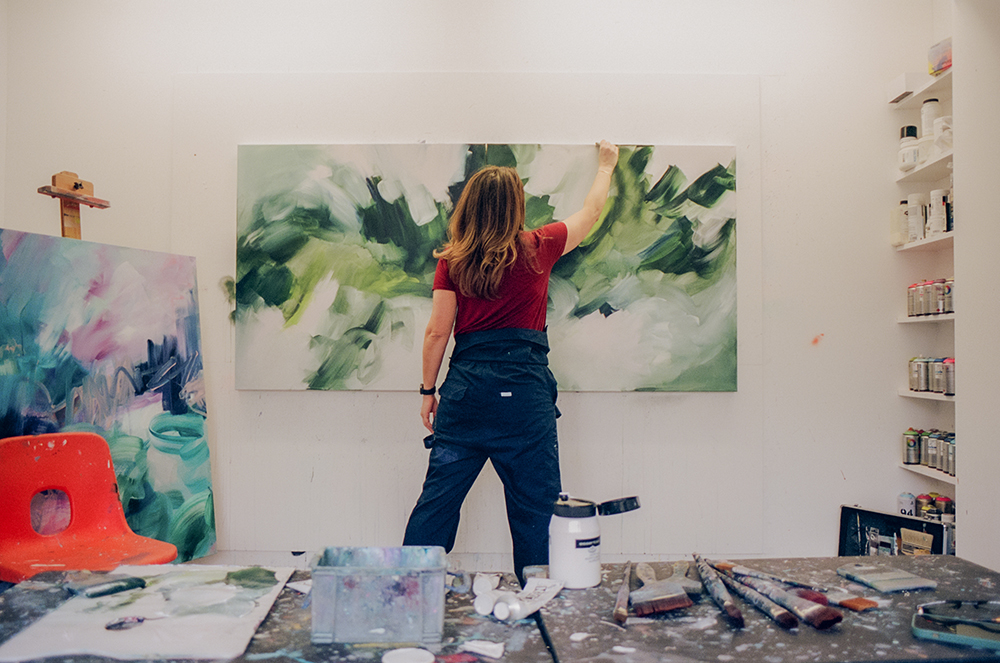
5 minute read
Blurred lines: Cultural placemaking and gentrification
by artiqannual
In cities, it’s normal to see change everywhere. They are constantly expanding, increasing in density and all the while, rising in cost. Most of us know what gentrification is but do we know the clear difference between it and cultural placemaking? Do we interchange the terms? There is a visible difference between the two and while we may recognise them in name, we may confuse them in practice, leading us to believe that one is akin to the other.
It is the aim of this annual to document and celebrate cultural placemaking in many forms. However, to clearly demonstrate that cultural placemaking and gentrification overlap is as important as highlighting the differences. Both practices of development make big changes to the environment in question. The importance of discussing the difference is so that we don't wonder whether a redevelopment is gentrification disguised as cultural placemaking.
Advertisement
Gentrification makes changes to an existing environment and community by introducing new shops and cafés to the local area. While it's convenient to have a supermarket closer by or a big chain cafe to meet friends, there is arguably an element of arrogance. Attracted to the area because of low costs, these developments are created without much interaction with the local community. Yes, research is carried out but more likely the results will show potential for profit rather than community engagement and safety.
Cultural placemaking builds upon and adds to an existing area in response to research that looks into what could benefit the area, transforming it into a place that in turn, will be used more. Immediately, we can see the overlap. Cultural placemaking changes and develops areas, sometimes beyond recognition. Gentrification does the same. The difference lies in the area in question and the motive behind the development. Gentrification glazes over the needs of the area and sees opportunity for profit. Where developers ignore the existing community, introducing new establishments without consideration for its surroundings, the people involved in cultural placemaking actively curate a space based on the environment, drawing upon their extensive research. Cultural placemaking refers to the act of generating cultural attraction. This could be in the form of pop-up events, exhibitions, markets, or shops. If a space is disused or lacks footfall, the council, wider government, or local businesses will come together to generate ideas on how to create engagement with the community. At the core of cultural placemaking is engagement through a sense of ownership. It looks at what is needed and wanted by the community. U
nfortunately, while we may enjoy the amenities provided by gentrification, it is this kind of development that removes a sense of ownership from the user by skipping the conversation between developer and community member. Cultural placemaking can make the spaces safer and more enjoyable for its users, as it creates a busier environment, brings more people to the streets and is as a result, frequented by its community more deliberately. A brilliant example of this is the transformation of Exchange Place in Broadgate, London. “Health and wellbeing form a vital part of the £1.5 billion investment in Broadgate to create an environment that brings people together to work, shop, drink and dine.” (1) The area was already a central spot for workers and passers through, being one of London’s busiest areas for foot traffic. The investment in the space to bring quadruple the amount of greenery to the space as well as bring more cafes and shops has not only positively demonstrated commitment to the natural environment, but also to the people who commute, work and live around the area.
Broadgate Circle has long been a site of positive development and the commitment to cultural engagement is an example of how cultural placemaking evolves based on its surroundings and grows to support its users.
In 2010, Broadgate began its bi-monthly farmer’s markets. In November 2017, their first Christmas market was installed. In 2012, Broadgate announced the Broadgate Art Trail exhibiting 16 artworks across the 32acre area. Received positively, architect firm Maylim was appointed by British Land as Principal Contractor for the 1.5-acre scheme. This purposeful placemaking is an example of user-research-driven development. The area was previously heaving with commuters and workers but this high-energy became similar to a wind tunnel, loud and unpleasant to pass through (2). The new expansive landscaping scheme features a mix of smaller plants and trees; encouraging wildlife and providing a versatile and sustainable outdoor space for people to come together and enjoy.
Another great example of successful cultural placemaking is the earlier spotlighted City Vistas. The underlying driver for this project was the notion of making attractive an area that had declined in popularity post-pandemic. A map and checkpoints were established to instil a sense of journey and hopefully take people along a path of the City that they would feel was something of their own.
Through the breakdown of each type of development, we are made aware of the crossovers. Cultural placemaking is arguably a better solution to the redevelopment of a space but as previously stated, it's about doing it usefully by taking into consideration the users of the space and the true benefits that will come out of the redevelopment. In short, both are approaches to the redevelopment of an area by adding something. Gentrification will give us something to do but cultural placemaking will give us something to enjoy.
Sophie Viet-Jacobsen, Creative Designer










